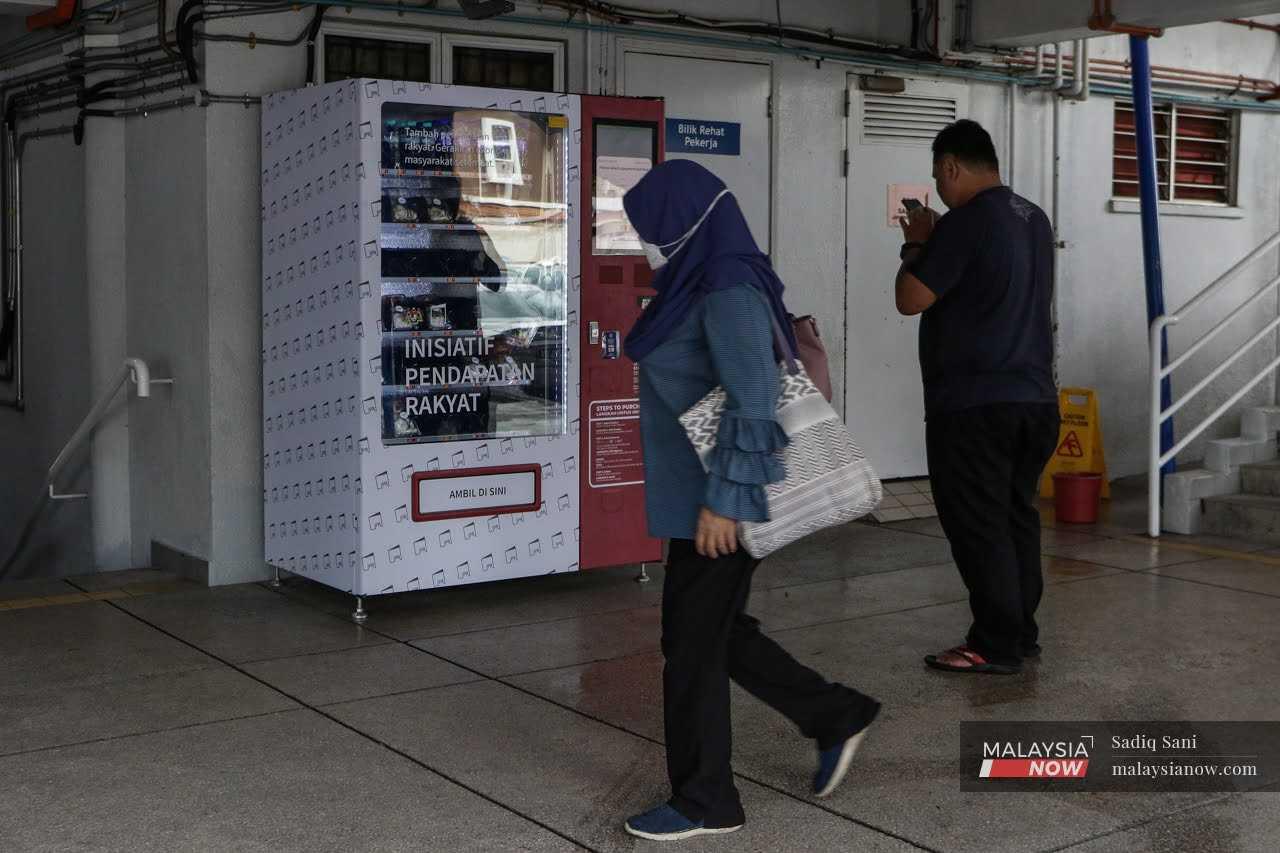Rafizi's nasi lemak vending machine idea runs into problems
While the idea is to sell nasi lemak for cheap, customers and vendors say many improvements could be made.
Just In
At the Cempaka LRT station in Kuala Lumpur, an orderly line of men and women wait for their turn at a vending machine selling packets of nasi lemak for RM2 each.
Many are dressed in office clothing although foreign workers and people out and about on daily errands are part of the queue as well.
One by one, they pay, collect their nasi lemak, and turn to leave.
Every once in a while, though, a packet of rice gets caught on its wrapping and ends up stuck out of reach.
Others make it through the shaft but are let down by the packaging and the single rubber band holding them together which give way, sending grains of rice flying as they land.
The sale of nasi lemak in vending machines is a recent scheme under the People's Income Initiative programme helmed by the economy ministry.
Economy Minister Rafizi Ramli had envisioned the process beginning with chilli farmers giving part of their harvest to other B40 operators in order to make sambal, the fiery red sauce essential to any serving of nasi lemak.
The nasi lemak would then be sold for as low as RM2 at vending machines in public places.
At the Cempaka LRT station, though, getting the nasi lemak out of the machine was not the only hitch.
A handful of customers also encountered problems paying for their meal with cash as the machine would encounter technical problems.
"Not everyone here can pay by card," a bank clerk who introduced herself as Faqih said.
"I have seen foreign workers queuing to pay with cash but the machine will not accept their money.
"It will be troublesome if it continues like this."
'A waste'
At her stall about 7km away from the station, a nasi lemak vendor described the initiative as a waste.
The woman who called herself Kak Julia also said that it made things difficult for vendors like herself.
Julia, who has run her stall for 17 years, said they too could prepare nasi lemak for RM2 if the government would distribute chilli harvests directly to them.
"It would be better for the minister to come and meet those of us who sell nasi lemak at the side of the road and give us those chillies," she said.
"Then we could save on costs and give customers quality side dishes, not just an egg."
Such an initiative could also be established throughout the country while saving the government the money it would need to maintain the vending machines, she added.
Asfanizam, a vending machine distributor agent in the Klang Valley, said there were many aspects of the initiative that needed to be addressed.
For one, he said, the cheap plastic wrapping secured only with a rubber band was not efficient for the customers.
He said the idea of selling nasi lemak had been around for a number of years, citing the earlier use of air-tight containers to keep the food fresh for a longer period.
These packages were also kept in temperature-controlled vending machines, which prevented the nasi lemak from going bad in the heat.
"Most vending machines or food vendors will also have a microwave oven to heat up the food once it is bought," he said.
Asfanizam said the new nasi lemak vending machine initiative could endure and achieve its original aim if such improvements were made.
"Otherwise, the customers will face the same situation every day," he said.
"They pay RM2 but the food gets stuck in the machine. Then they have to pay RM3 more to buy nasi lemak from another stall at the side of the road.
"That's such a waste. It would have been better for the person to have paid RM5 from the start for rice and side dishes somewhere else."
Subscribe to our newsletter
To be updated with all the latest news and analyses daily.
